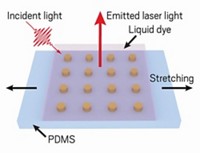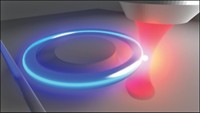Advertisement
Grab your lab coat. Let's get started
Welcome!
Welcome!
Create an account below to get 6 C&EN articles per month, receive newsletters and more - all free.
It seems this is your first time logging in online. Please enter the following information to continue.
As an ACS member you automatically get access to this site. All we need is few more details to create your reading experience.
Not you? Sign in with a different account.
Not you? Sign in with a different account.
ERROR 1
ERROR 1
ERROR 2
ERROR 2
ERROR 2
ERROR 2
ERROR 2
Password and Confirm password must match.
If you have an ACS member number, please enter it here so we can link this account to your membership. (optional)
ERROR 2
ACS values your privacy. By submitting your information, you are gaining access to C&EN and subscribing to our weekly newsletter. We use the information you provide to make your reading experience better, and we will never sell your data to third party members.
Analytical Chemistry
SPR Imaging With White Light
June 16, 2008
| A version of this story appeared in
Volume 86, Issue 24

A new surface plasmon resonance (SPR) sensor that is optimized for visible and near-infrared wavelengths could make SPR imaging cheaper and easier to use, according to a study led by chemistry professor Ralph G. Nuzzo and materials science professor John A. Rogers of the University of Illinois, Urbana-Champaign (Angew. Chem. Int. Ed., DOI: 10.1002/anie.200800501). In SPR, polarized light strikes a layer of metal at the interface between media with different refractive indexes, exciting electromagnetic waves called surface plasmons that are sensitive to changes at the interface. The researchers devised an SPR crystal made of an array of gold-coated nanowells. The new device, which is more sensitive at visible and near-IR wavelengths than previous SPR sensors, depends on the diameter, depth, and spacing of the wells and on the thickness of the gold layer. The researchers tested it by using white-light illumination to image 1-octadecanethiol monolayers on the sensor surface. The improved performance in the visible and near-IR spectral regions suggests that such SPR optics could be used with standard laboratory optical microscopes and low-cost charge-coupled device cameras.





Join the conversation
Contact the reporter
Submit a Letter to the Editor for publication
Engage with us on Twitter